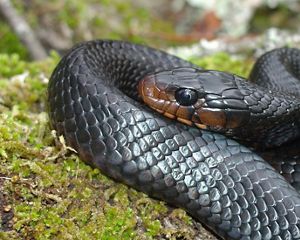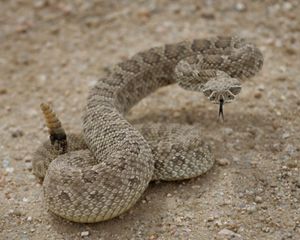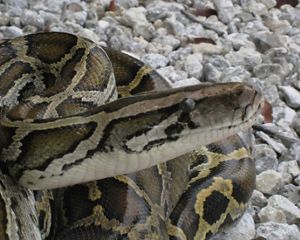

Eastern Indigo Snake Fast Facts
Class: Reptilia
Scientific name: Drymarchon couperi
Conservation status: Threatened
Average Length: Males: 5.2 ft (1.58 m); Females: 4.5 ft (1.38 m)
Meet the Eastern Indigo Snake
The eastern indigo snake is an icon of the southern longleaf pine forest and is the longest native snake on the continent. A non-venomous apex predator, it preys upon many species of animals including some venomous snakes, and it plays a critical role in keeping an ecosystem healthy and balanced.
When identifying the eastern indigo, look for the following characteristics:
bluish black in color, appearing iridescent purple in the light
orange-red on the chin, sides of the head and throat
males commonly reach 7–9 feet in length, females are slightly smaller
- new hatchlings are 16-24 inches long
- produces annual clutches of 6–12 eggs, Indigos may travel up to three miles during warmer seasons in search of new habitat and prey.

An Apex Predator Returns
The reintroduction of eastern indigo snakes in North Florida could be groundbreaking.
How it happenedProtecting the Eastern Indigo
In 1978, eastern indigos were federally listed as a threatened species under the Endangered Species Act. Threats to the snake included loss of habitat, which continues today, and over-collection for the pet trade. Vehicle strikes on the roadway are also a danger.
Eastern indigos have largely been eliminated from North Florida due to habitat loss and fragmentation. Adult indigos may travel a span of three miles during warmer seasons, so large, intact landscapes are essential for the specials survival.
Few if any indigos persist in North Florida. Populations in other parts of the state, although declining, still have strongholds in warmer Central and South Florida, where it rarely drops below freezing. Indigos hibernate during cold weather, nestling in gopher tortoise burrows when temperatures reach the 20s. They often return every winter to the same burrow. When tortoises were heavily harvested and suffered habitat loss in North Florida, the indigo population was impacted as well.
The snake had not been seen at the Conservancy’s Apalachicola Bluffs and Ravines Preserve (ABRP) in Florida since 1982. But as of 2017, the king of North America’s snakes has been returned to its home along the Apalachicola River, to restored longleaf pine habitat, a collaborative effort between the Conservancy and many land, water and wildlife conservation agencies.
The release marked the beginning of a 10-year indigo release program to support species recovery in the region, part of a monitoring program by Auburn University, which will track the snakes to inform future conservation efforts.


